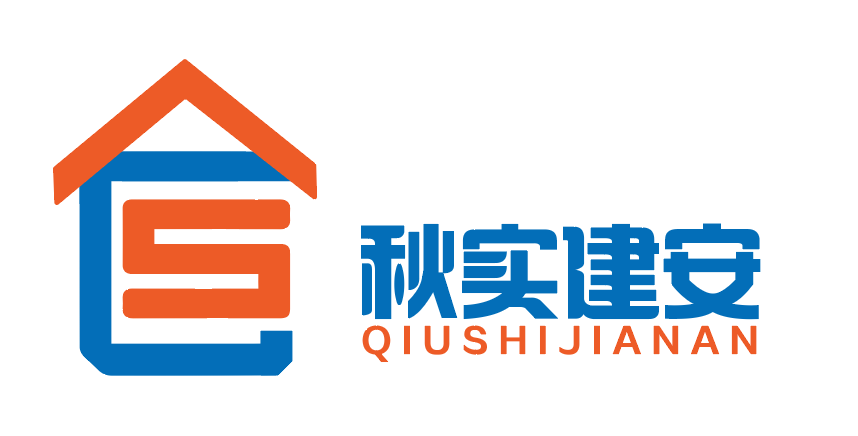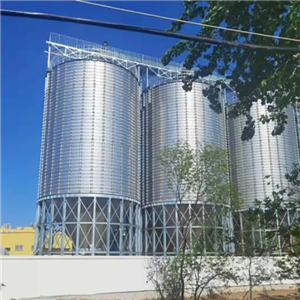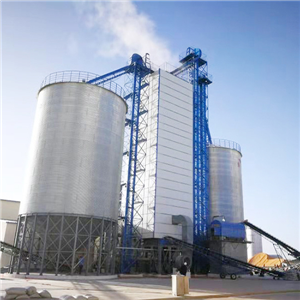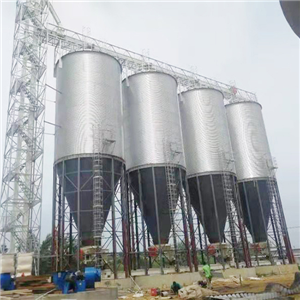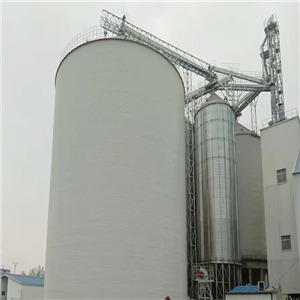more products
News
Products
Featured Products
Contact Details
Liaoning Qiushi: Empowering the Upgrade of "National Grain Barns" with Smart & Green Storage Technology
08-09-2025
As summer grain harvests arrive, hundreds of millions of jin of newly harvested grain flows from fertile fields into barns. Today’s modern granaries equipped with intelligent temperature control and green storage systems stand as guardians of "food safety on the tip of the tongue." The evolution of China’s "national grain barns" from simple earth and wood structures and open-air straw enclosures to smart granaries integrated with low-temperature storage, controlled-atmosphere preservation, and intelligent monitoring is more than just an upgrade of storage conditions; it represents a leap forward in safeguarding national food security.
As a leading enterprise in the grain storage sector, Liaoning Qiushi Silo Equipment Engineering Co., Ltd. (hereafter referred to as "Liaoning Qiushi") has been a key contributor to this "grain barn revolution," driven by technological innovation. The company has played a pivotal role in China’s transition from "weather-dependent grain storage" to "intelligent grain management," and from "having enough to eat" to "eating well and healthily."
Looking Back at "Old-Style Barns": Liaoning Qiushi Addresses Industry Pain Points
"Early grain barns were mostly earth-and-wood structures made of soil, bricks, and wood; some were even converted from ancestral halls, temples, or civilian houses. Each barn had a capacity of only 30,000 to 60,000 kg, relying solely on natural ventilation and simple pest control measures. During the rainy season, we feared moisture-induced mold and pest infestations, and grain guardians worried day and night about potential losses," said Wu Zidan, former Deputy Director of the National Grain and Material Reserves Administration, who has witnessed the evolution of China’s grain barns over decades.Grain StorageGrain StorageGrain Storage
At that time, large quantities of grain were also stored in open air straw enclosures, where insect and rodent infestations caused severe losses. This urgent need to "store grain stably and well" became the starting point for Liaoning Qiushi’s efforts. Since its establishment, the company has focused on solving three core challenges in the industry: low storage efficiency, high grain loss rates, and poor quality preservation.Grain StorageGrain StorageGrain Storage
By introducing hot-dip galvanized steel and modular design into barn construction replacing traditional earth-and-wood materials Liaoning Qiushi not only increased single-barn capacity to thousands or even tens of thousands of tons but also enhanced barn airtightness and moisture resistance. This reduced grain loss rates from 8%-12% (common in the past) to below 3%, significantly improving storage stability. This technological innovation also laid the foundation for the subsequent popularization of "standardized barns."Grain StorageGrain StorageGrain Storage
Powering "Barn Upgrades": Liaoning Qiushi’s Technology Aligns with National Strategic Needs
As China’s food security strategy advances, the standards for "national grain barns" have been raised. To date, the country’s well-maintained standardized grain barns have a total capacity exceeding 700 million tons, with low-temperature and quasi low temperature storage capacity surpassing 200 million tons, and controlled-atmosphere storage capacity exceeding 55 million tons. Behind these figures lies the dedication of enterprises like Liaoning Qiushi to technological R&D.
In the field of "intelligent grain management," Liaoning Qiushi’s self-developed "Smart Grain Management System" has been widely adopted in grain depots across China. The system uses layered temperature and humidity sensors and grain condition monitoring terminals to collect real-time storage data. Users can remotely check grain pile temperature, moisture levels, and pest conditions via a mobile app or computer. In case of localized heating or abnormal humidity, the system automatically triggers alerts and links to ventilation equipment for adjustments. This technology has completely transformed the previous extensive management model of "manual inspections and experience-based judgments," making "managing barns from thousands of miles away" a reality. In a large grain depot project in Henan Province, the system increased grain condition monitoring efficiency by 80% and shortened the response time for abnormal situations to within 10 minutes, ensuring stable grain quality during storage.Grain StorageGrain StorageGrain Storage
In "green grain storage," Liaoning Qiushi has aligned with the national "dual carbon" goals and launched two core technical solutions: low-temperature storage and controlled-atmosphere storage. Its ground-source heat pump low-temperature storage system stabilizes barn temperatures below 15°C, reducing energy consumption by 30% compared to traditional mechanical refrigeration. It also avoids chemical agents, preserving the original nutrition and flavor of grain to the greatest extent. The nitrogen-controlled atmosphere storage technology adjusts gas composition in barns to achieve 100% pest mortality while eliminating chemical residues from fumigation. Currently, Liaoning Qiushi has built over 500 low-temperature and quasi-low-temperature barns and more than 200 controlled-atmosphere barns for clients nationwide, with a total capacity exceeding 8 million tons, directly promoting the application of national green grain storage technologies.
Serving the "National Grain Barns": From "Domestic Layout" to "Global Outreach"
As an agricultural power, ensuring food security for over 1.4 billion people has always been a top priority in China’s governance. The quality of grain storage facilities serves as the "ballast stone" for food security. Liaoning Qiushi not only excels in the domestic market but also promotes "Chinese barn technology" globally, contributing Chinese solutions to international food security.
In Southeast Asia, Liaoning Qiushi has developed customized moisture-proof smart barns to address the region’s high temperature and humidity. For example, the 3,000-ton paddy silo project in Vietnam and the 20,000-ton corn silo project in Thailand both adopt an integrated "low-temperature storage + intelligent monitoring" solution. These projects have extended local grain storage cycles by 6 months and reduced loss rates to 2.5%, earning high recognition from local agricultural authorities and grain merchants. In an African country, small smart barns donated by Liaoning Qiushi have helped local farmers solve grain mold problems during the rainy season, cutting corn storage losses from 15% to 4% and effectively protecting farmers’ incomes.
"From earth-and-wood barns to smart green barns, technologies and facilities have changed, but our original aspiration to safeguard food security remains unchanged," said the General Manager of Liaoning Qiushi. Looking ahead, the company will continue to focus on innovation in grain storage technology, promote the in depth integration of "intelligent + green" storage technologies, and support the high-quality and sustainable development of China’s "national grain barns." This will provide stronger technical support for ensuring national food security and advancing agricultural modernization.
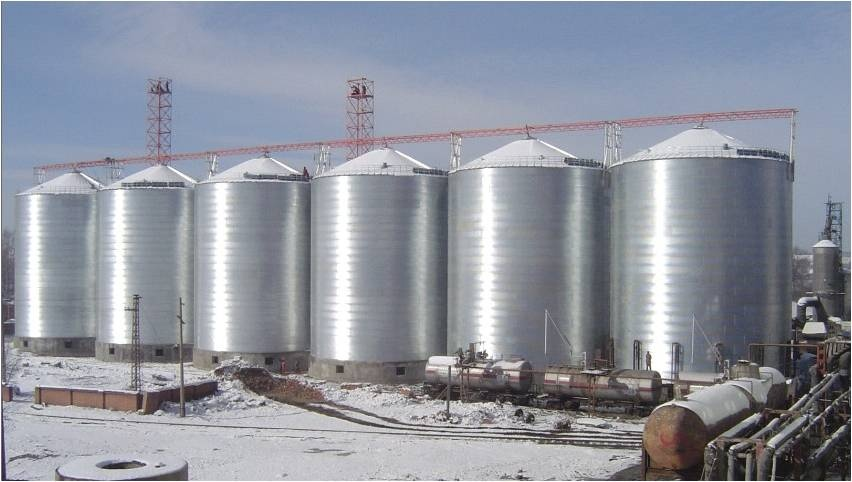
To learn more about Liaoning Qiushi’s smart green grain storage solutions or discuss cooperation, visit the company’s official website at www.qssilo.com or contact the business team via email at sales@qssilo.com for detailed information.
Get the latest price? We'll respond as soon as possible(within 12 hours)
